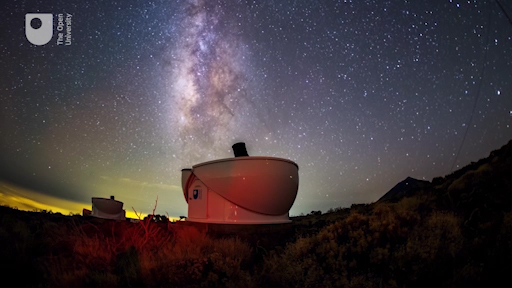Week 2: Telescopes and visual observing
Introduction
We hope you enjoyed studying the first week of Astronomy with an online telescope. Course author Alan Cayless will now introduce the topics you’ll be studying in Week 2 of the course...

Transcript
[MUSIC PLAYING]
Now that you have installed the Stellarium software and started to navigate your way around the night sky it is time to consider the equipment that you can use to observe, and fully experience, some of the stunning objects the Universe has on offer.
The human eye is itself a remarkable optical system capable of amazing sensitivity under the correct conditions. You will therefore begin by considering how to make the most of your unaided vision for night-time observing. Some celestial objects are best experienced with the naked eye, but fainter objects will benefit from the use of binoculars or a telescope.
Whatever equipment you are using, one thing is certain: it is important to find the right place from which to observe the night sky. This week you’ll explore what makes a great observing site and you will get your first detailed look at the COAST facility on Tenerife.
By the end of this week you will be able to:
- understand how the human eye adapts to dark conditions and how to make the most of your dark-adapted vision for astronomical observations
- understand the need for telescopes with larger apertures and more sensitive detectors in order to collect more light and observe objects fainter than those that can be seen with the eye alone
- explain how telescopes work and how the primary element of a telescope captures and focuses light to produce an image that can be magnified by an eyepiece or captured using a camera or sensor
- understand how the Earth’s atmosphere can affect the quality of images formed by telescopes on the Earth’s surface and how the right choice of observing site can minimise these atmospheric effects
- understand the purpose of COAST’s size and location.
